A Deer Fence Can Be Decorative as Well as Protective
By late summer, the tender ground-level vegetation preferred by deer starts to dry up in most places. Wherever residential areas abut green space, this is the time of year that a hungry deer may decide that your lush, irrigated garden looks tastier than the stubbly, wild vegetation it has left at its disposal. While deer might avoid areas of human activity when the eating is good in the forests and fields, the scales can tip once they get a taste of your rosebushes. And the next thing you know, the whole herd is descending on your property every night when the sun goes down.
So you decide you need to put up a fence. Plenty of gardening books and websites will tell you that 7 feet is the minimum height for keeping deer out, and 8 feet is even better. Most people find a fence of that size to be an eyesore, but, as you’ll see below, there are plenty of ways to build a deer fence that looks and feels like an asset in the overall garden design. And you might be relieved to know that the size requirement does not apply in every instance.
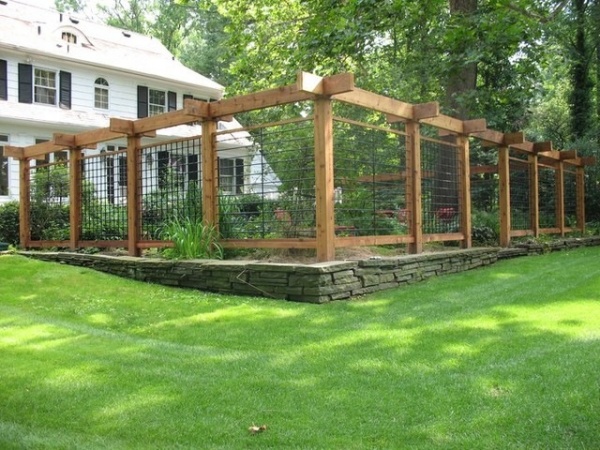
Add an attractive frame to mesh fencing. Wire mesh fencing is practical and affordable, but looks pretty scrappy on its own. Instead of stringing it up along a row of metal posts, frame it on all sides with wood. You can style the woodwork to match other nearby landscape features using trim, custom shapes, paint or other embellishments. Compared to a solid wooden fence, which can feel quite ominous, the mesh is practically invisible inside the wooden framework.
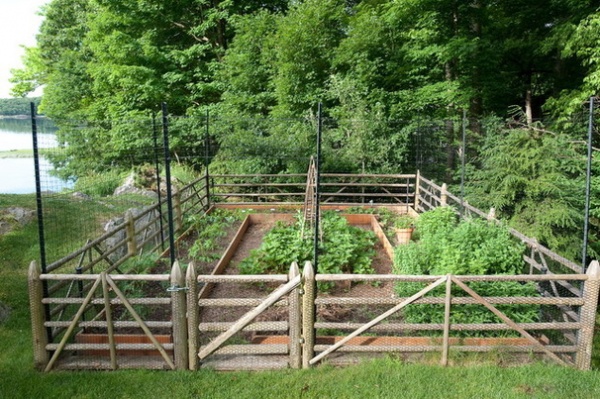
Even more invisible than metal mesh is black plastic mesh fencing, which is often sold specifically as a “deer fence” in a 7-foot width. It can be framed in wood, like in the previous image, but it is often used as a temporary measure or as an emergency add-on to a smaller existing fence, as seen here. It is so lightweight that bamboo poles or small-diameter wooden posts can support it.
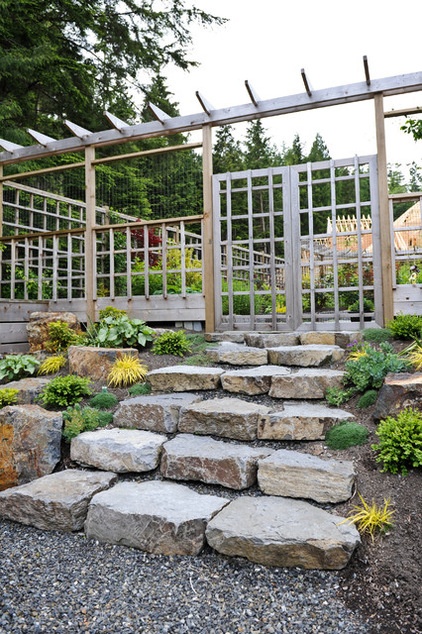
Incorporate a pergola. You may have read that deer are capable of jumping a 6- or 7-foot fence. However, that applies mainly when the deer can see that there is plenty of open space on either side of the fence and there are no obstacles hanging overhead. They are skittish animals and do not go jumping into solid objects. Thus, the fence pictured here, with a pergola running over it that’s about 6 feet high, is impassable as far as deer are concerned. Seeing the cross members of the pergola will dissuade them from jumping up and over, and it is very unlikely that one would attempt to thread the needle and leap through the opening between the pergola and the top of the fence.
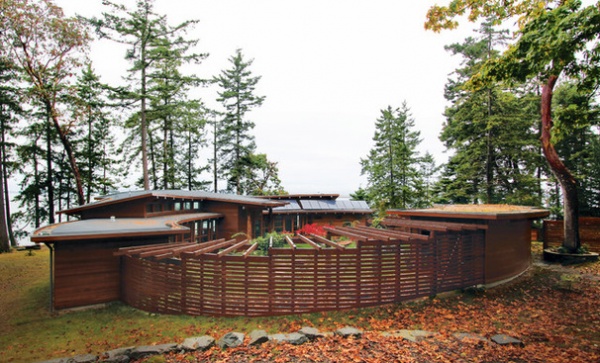
The integration of a fence and pergola is a classy way to make a modest-size fence big enough to keep out deer without letting it dominate the landscape in a visually obtrusive way. Plus, it also serves as a support structure for vines and is an enchanting way to enclose an outdoor space.
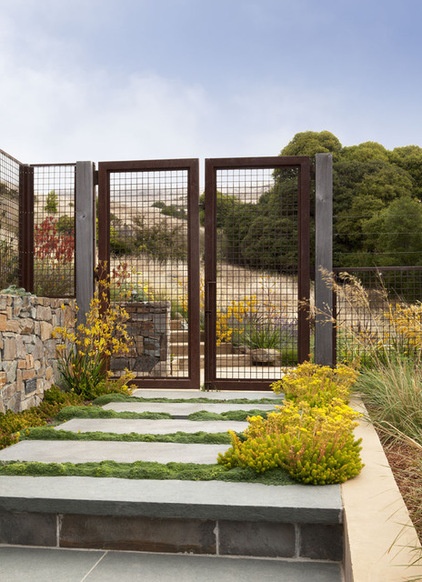
Think stylistically. Done right, a large fence is not inherently unattractive — it can add a sense of grandeur. Using metal rather than wood balances the scale of the fence with a bit of minimalism. In this case, the fence is not an afterthought to serve the practical purpose of keeping deer out; it is a distinguishing feature of the landscape.
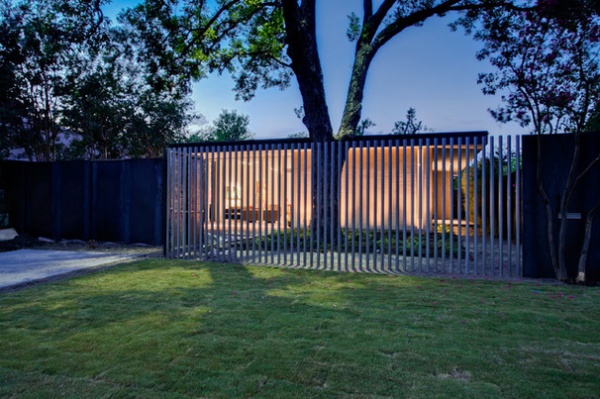
The sky is the limit when it comes to fence design. A recent trend is to build a fence with nothing but vertical posts spaced close together to form a barrier. Rather than a monstrosity, it feels open and airy and has a sense of visual permeability that is hard to achieve in any other style. It is impermeable by deer, however, as long as the space between the posts is less than 8 inches and the posts are at least 7 feet tall.
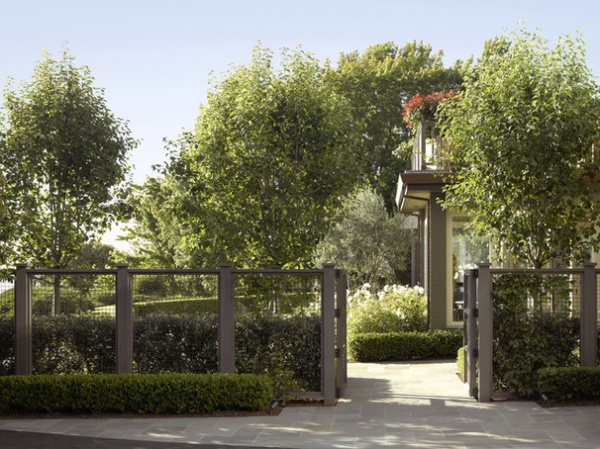
Add a hedge. Fencing experts will tell you that deer can jump high and they can jump far, but they can’t do both in the same leap. Thus, one way of keeping them out is to have some sort of obstruction on one or both sides of the fence — a hedge is a logical thing to use. Greenery makes a lovely complement to any fence, softening the straight lines and verticality of the structure. The wider the hedge is, the lower the fence can be. Just don’t forget to close the gate, or all your efforts in fence building will be for nothing.
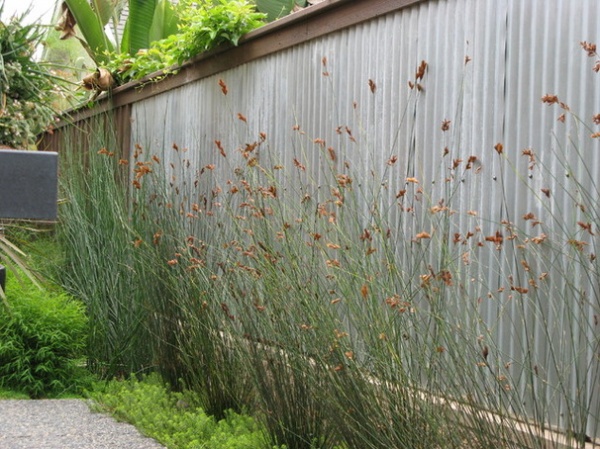
Build a wall. Deer are much less likely to jump when they can’t see what’s on the other side. Unlike a see-through fence, the accepted height for a deerproof wall is about 6 feet. Walls can easily be monstrous in form— and in their impact to a landscaping budget. However, there are some slender, inexpensive options, such as a corrugated metal wall like the one pictured here.
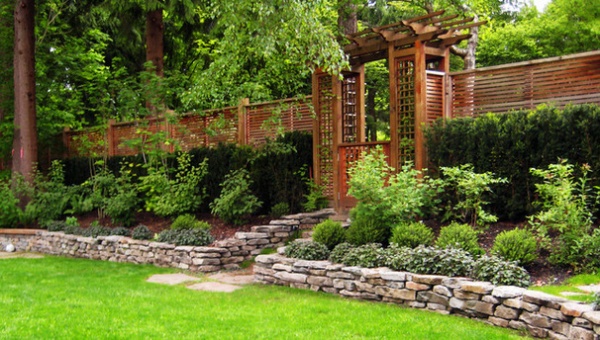
Use what works in your context. Height, width and overhead obstructions all help to deter deer from getting over a fence. Slope is also relevant, as deer have a harder time jumping over a fence that is uphill compared to one it approaches from above. One or several of these ingredients may play a role in your fence design, but above all, the fence should fit with its environs.
Tell us: Have you incorporated any of these features into you garden? Show us in the Comments.
More
Great Garden Combo: 3 Wonderful Plants for a Deer-Resistant Screen
How to Choose the Right Fence












